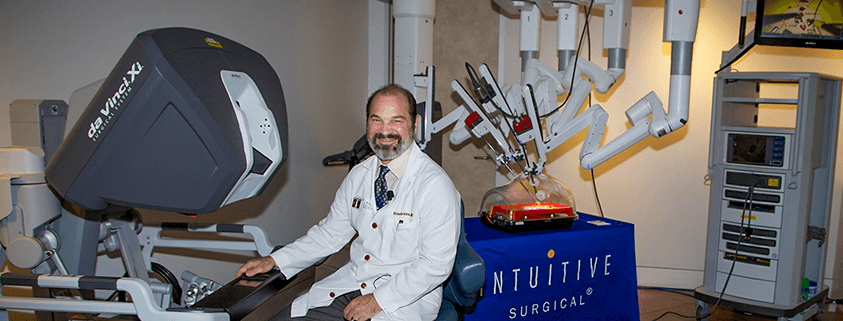Robotic Surgery News
Get the latest News and Updates about Dr. Brian Harkins Robotic Surgery, Case Observations, Procedures, robotic surgery procedures, and more.
TRMC advances robotic surgical platform for patients
A new robotic-assisted surgical system is paving the way for improved patient outcome statistics at the Tomball Regional Medical Center.
TRMC purchased and implemented the new robotic surgical platform in 2014. Dr. Brian Harkins, a surgeon at Tomball Regional Medical Center, said he has carried out the second highest number of general surgery cases using the new robotic platform of all surgeons in the world.
Dr. Harkins spoke at the Greater Tomball Area Chamber of Commerce luncheon Aug. 7 about the benefits and drawbacks of using robotic technology in surgery
“The robot doesn’t do surgery any more than a scalpel or hemostat does surgery,” Dr. Harkins said. “It has to be manipulated by a surgeon. This is the way the system is set up, and it doesn’t actually do anything on its own.”
During a robotic surgical procedure, a surgeon is seated at a console with an armrest and headrest and can control the precise movements of the robot with his hands, Dr. Harkins said.
The robotic technology allows for improvements in dexterity with “wristed” instruments, ergonomics of hand motions, 3-D vision and an increased possibility of single-incision surgeries, Dr. Harkins said.
“In this case where the surgeon is sewing, instead of reaching way out to do all of that, it’s right here in front of you,” Dr. Harkins said. “You see it in front of you and move your hands in a very simple motion.”
A significant portion of procedures traditionally carried out by open surgeries that may require multiple large incisions are now being conducted with the robotic platform, such as hysterectomies and prostatectomies, Dr. Harkins said.
However, one of the drawbacks of the robotic surgical platform is its financial cost, Dr. Harkins said. When first implemented several decades ago, laparoscopic surgery was a more costly option for hospitals, and now it is recognized as a standard for many procedures, he said.
The robotic surgical platform is the most advanced technique available for abdominal surgery, Dr. Harkins said.
“In the robotic world, it’s always crystal clear and magnified, and you are fully in the picture,” Dr. Harkins said. “Precision and complete control of the instrument makes a difference over time. Technology allows you to have better information in the operating room, which should lead to better decisions and better outcomes.”
TRMC plans to continue improving recovery times for patients and reduce surgical complications with the robotic platform, Dr. Harkins noted. With more funding, TRMC seeks to upgrade and implement a newer model of the robotic platform with additional surgical capabilities in the near future, he said.
“This is the current revolution in minimally-invasive surgery,” Harkins said. “It is a long awaited upgrade for laparoscopy and something we needed for awhile. I’m going to continue offering my patients at Tomball Regional Medical Center the best, the safest and most advanced care possible using the robotic platform.”
For more information, please call us: 281-351-5409 or click here to fill out the form
Robots lead the way in minimally invasive surgery
Susan Caesar is about to perform a minimally invasive procedure using a robot. It’s her first time and she’s not even a doctor. She actually works at Hewlett Packard.
“Two small movements and I learned how it reacted to my movements. I was picking up the little circles and putting them on the cones so it was pretty great.” she said afterward.”
Ok, the robot is real but the patient is not. This is just a demonstration of the Davinci Xi robot by Intuitive Surgical. Doctors affiliated with Tomball Regional Medical center are showing it off and letting employees at HP put it through it’s paces. The robot can take the operators large motions and make them smaller with incredible precision. Its the newest thing in minimally invasive surgery. The doctors love it and say the patients do too..
“Right now with this I get better visualization and the patient experiences less pain and quicker recovery with it.” claimed one surgeon.
Not to mention fewer complications afterward like post operative infections that could lead to costly readmissions.
But at two million dollars, many hospitals might balk at buying one.
“But just like laparoscopy is still more expensive for a gallbladder than an open surgery yet we do it anyway because the patient outcome is better.” said Dr. Brian Harkins. He says surgical robots like this are the future of medicine, and the future is here.







